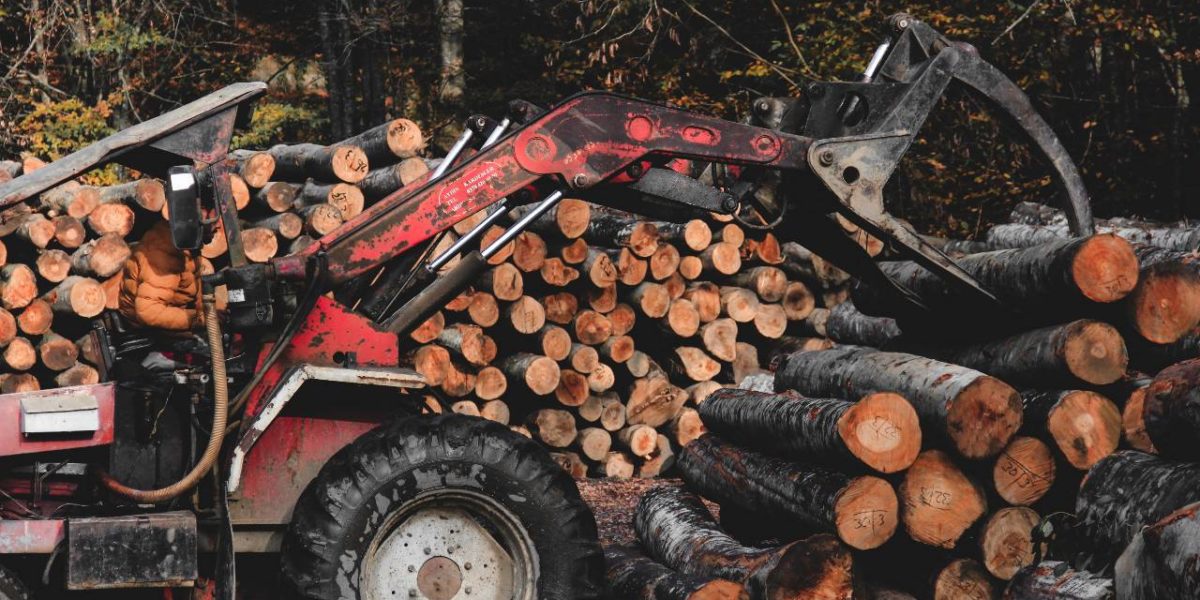Logging in Canada is a climate polluter at least on par with oil sands operations.
That is the main finding of a new report, Lost in the Woods, which calculates for the first time, using the federal government data, the net greenhouse gas (GHG) emissions associated with logging in Canada.
The report, published this week by Nature Canada and the Natural Resources Defense Council, debunks the widespread myth that industrial logging is carbon-neutral, and exposes a massive hole in Canada’s climate plan.
It shows that the logging industry, which clearcuts hundreds of thousands of hectares of carbon-rich forests each year (the equivalent of six NHL hockey rinks a minute), is one of the highest-emitting sectors of the Canadian economy.
In 2020, logging’s net emissions totalled 75 megatonnes of carbon dioxide (Mt CO2e), a figure on par with the emissions from all oil sands production in Canada (81 Mt CO2e).
In other words, even accounting for carbon stored in long-lived wood products and absorbed by replanted trees, logging produced more than 10% of Canada’s total emissions in 2020, or the equivalent of all GHG emissions from the province of Quebec.
But these numbers might still be underestimating logging’s full climate impact. Because the Lost in the Woods analysis relies solely on government data, the calculations are limited by flaws and omissions in the government’s own accounting and reporting. The government, for instance, does not include the carbon impact of “logging scars,” areas where, even decades following logging, the forest has failed to grow back.
Canada neither reports – nor has a plan for reducing – logging emissions
Canada has action plans to reduce emissions from other high-emitting sectors, but has no such strategy for the logging industry.
In fact, the federal government doesn’t even report logging emissions in its annual GHG inventory. Instead, emissions data is scattered across government materials and buried under the reported carbon sequestered by older, greenhouse gas-absorbing forests the logging industry has never touched.
The federal government has, laudably, committed to cut GHG emissions by at least 40% (from 2005 levels) by 2030. If Canada is serious about meeting this target, it cannot ignore a sector that emits more than 10% of Canada’s GHG emissions.
The government can fix this glaring hole in its climate plan.
First, Canada must start to transparently report GHG emissions associated with logging – and thereby publicly recognize that logging is a high-emitting sector.
Second, it should develop and implement a clear strategy – with timelines and targets – to reduce emissions from logging. This plan should include regulating logging emissions, just as the emissions from other sectors are regulated.
Finally, Canada should take action to fix the serious biases and omissions in its accounting of forest carbon emissions.
Reducing logging emissions is key to tackling climate change and protecting nature
Canada is home to some of the most ecologically important primary forests in the world, including the boreal forest, which stores twice as much carbon as the world’s oil reserves. These forests are integral to ensuring a climate-safe future, not just for Canadians but for the entire world.
Accurately and transparently measuring the climate impacts of industrial logging is a key first step to putting in place effective policies and programs that will fully value our irreplaceable primary forests and recognize the true cost of losing them.
Accurate emissions reporting – and regulation – will also help advance, with Indigenous leadership, a truly sustainable logging sector that will remain competitive in an increasingly climate-conscious marketplace.
At the COP27 climate meeting coming up next week, and the COP15 biodiversity conference in Montreal in December, Canada’s credibility as a leader on climate and forest protection will depend on whether it acknowledges and addresses the significant impacts of business-as-usual logging in its globally vital forests.
As the reality of the climate crisis hits home for more and more communities across Canada, policymakers can’t afford to ignore one of the country’s largest climate polluters. The atmosphere sees the industry’s impact, whether the government chooses to acknowledge it or not.



